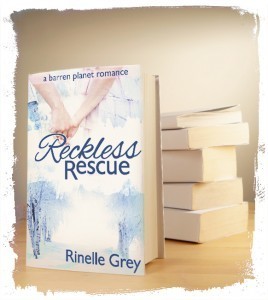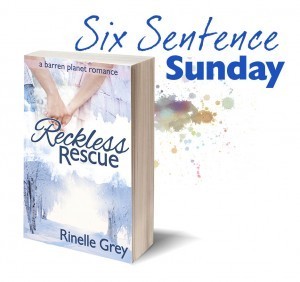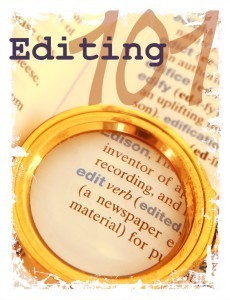Rinelle Grey's Blog, page 27
February 14, 2013
Table of Contents in Novels – Do We Need Them?
So, it’s Valentine’s Day (here in Australia, almost over in fact), and no novel yet. Sorry!
Formatting is mostly done. I sent it out to friends and family to proofread, expecting them to find a couple of spelling mistakes, or missing punctuation marks. But of course, they’ve found other issues that I need to fix. Hopefully not long now.
Today though, I wanted to raise a new question. One of the recomendations Amazon makes in their formatting guide is to include a Table of Contents.
On the surface, this recomendation makes sense. In an ebook, a table of contents enables us to jump straight to the chapter we want in a book. In a non-fiction book, they’re essential, and I use them frequently. If you download a book sample, the table of contents can give you an overview of the topics included.
But in a novel?
Usually the table of contents consists of:
Chapter 1
Chapter 2
Chapter 3... and so on.
It doesn’t tell you much about the book at all, except that it contains chapters. (Which hopefully you already guessed.)
I don’t know about you, but I haven’t used the table of contents in a novel once. If I pause reading, and need to get back to where I was, I just open the book and it’s kept it’s place. If I really need to find a certain place again, I can bookmark it.
I checked a few ebooks, and while almost all of the self published ebooks have one (probably because of Amazon’s recomendations), many of the traditionally published ebooks didn’t include one.
So what do you think? Does a table of contents have a place in an novel ebook? Have you ever used one? Do you include one in your ebooks?
February 5, 2013
The Challenge of Naming Spaceships
 Reckless Rescue is so close to being ready to publish I can taste it! I’m aiming to have it out by Valentine’s Day!
Reckless Rescue is so close to being ready to publish I can taste it! I’m aiming to have it out by Valentine’s Day!
I’m just going through the last of my readers comments, and one suggestion was to come up with names for the two spaceships that are prominent in the story. While I love the suggestion, and think it will really give my two ships more personality, I also hate the suggestion because it means I need to think of names!
Character names I can usually do. Since I write science fiction and fantasy, I generally put together some syllables that sound namish, and fit the feel I’m aiming for for that particular character. Ship names though, require a little more thought. For some reason, I feel like they should have meaning.
The first ship I have to name is a deep space exploration vessel. Fuelled by ‘anysogen’, the rare gas that enables faster than light travel, Tyris is using it to search for more of the valuable fuel. It’s fast, sleek, and modern, and it needed not only a name, but also a name for the type of ship.
In the end, I went with an acronym for the type of ship. It’s now a HSLD-SV Mark II. I’m not sure whether what that stands for will come into the story or not, but in my head, it stands for High Speed, Long Distance Survey Vessel. This specific ship is called the Hylista. A random string of sounds that seems spaceshippy to me, and gives (I hope) the impression of sleek sophistication.
The second ship is almost the polar opposite of the first. It’s big, slow, and fashioned from random bits and pieces my refugees had access to. It isn’t an engineering masterpiece, but it did save the lives of fifty people marooned on a planet about to be destroyed by an asteroid. It needed a heroic name. Or at least one that spoke of the hardship it’s passengers endured, and their determination not to die, not to be left behind.
It’s called The Tenacity. Because the people left behind on the planet said that the only thing that would save them was Nerris’s tenacity. And since he built the ship, they named it so.
February 1, 2013
I’m Back – With a new cover!
 I’ve been far too absent from my blog. I haven’t forgotten my blog, I’ve just been so bogged down in editing that I haven’t had any energy left over for blogging.
I’ve been far too absent from my blog. I haven’t forgotten my blog, I’ve just been so bogged down in editing that I haven’t had any energy left over for blogging.
But, I’m down to the last steps now. I have three changes I want to make, then I need to do a proofread, and then I’ll be working out how to format it and upload it. I’ll hopefully do a post about my formatting experience, and uploading too.
For now though, here’s the new cover I’ve been working on. I loved the cover I had, but it didn’t give any hint as to the science fiction side to the story. So now there is a spaceship on my cover.
November 8, 2012
Release Date Revisions
 Well the time has come to admit that there is no way I can get this novel ready to release in November.
Well the time has come to admit that there is no way I can get this novel ready to release in November.
When I first set the date, it was with the idea that if I didn’t set a date, it would never happen. And that has worked. I am far closer to having this book ready than I would have been without the deadline.
But the more I work on it, the more I know that I want it to be the best that it can be. And it will take at least a week or two to finish my own edits, then there will be two rounds of professional edits to go through (the timing of which I have minimal control over, finding an editor on short notice is not easy!)
I’m striving for December, and keeping my fingers crossed!
November 3, 2012
Six Sentence Sunday – The Best Laid Plans
 Today’s six is a little bit before most of what I’ve posted. I wanted to show Tyris’s life before things all began to go crazy. (Sorry it’s a little late today, it’s been one of those weeks.)
Today’s six is a little bit before most of what I’ve posted. I wanted to show Tyris’s life before things all began to go crazy. (Sorry it’s a little late today, it’s been one of those weeks.)
*****
Tyris’s phone buzzed on his bedside table, and he rolled over to pick it up, rubbing his eyes. The bed was empty beside him, the covers thrown back. He stared at the message on the screen, trying to focus his eyes.
The little blinking text said “The event ‘Wedding Anniversary’ is in one week.”
He smiled, and lay back on the pillows, debating what to surprise Milandra with this year. He flicked through a few online sites, checking for local events, and booked tickets for dinner and a show at a new restaurant he and Milandra had been discussing.
*****
Read more excerpts like this at Six Sentence Sunday!
November 1, 2012
Editing 101 – Part 6 – Proofreading
 And today, we come to the final step in the editing journey. You’ve checked your main ideas, made sure all your scenes are relevant to the theme and your character’s journey, checked for extraneous words, and made sure that you are showing, not telling.
And today, we come to the final step in the editing journey. You’ve checked your main ideas, made sure all your scenes are relevant to the theme and your character’s journey, checked for extraneous words, and made sure that you are showing, not telling.
The story is polished to the best of your ability. Now it’s time to proofread.
There’s no really easy way to go about this. Proofreading involves going through your story, preferably a couple of times, and looking for mistakes. A word left out here, a typo there, a comma when there should be a full stop.
Sounds easy, right?
Well think again. The trouble is, when we’ve lived with a story for as long as it’s taken to write and edit one, you start to see what you think should be there, not what is really there. Your brain fills in the missing bits, adding that word you left out, and ignoring that extra comma.
There’s no way to make sure you catch every mistake. Even well known books by practiced authors still have mistakes. But there are some tricks you can use to catch as many errors as possible:
* Read your story out loud
* Get a program to read it out loud to you
* Ask a friend to read it
* Change the font, size, line spacing, anything to get you looking at the story with fresh eyes.
* Import it into your e-reader if you can
My next step, after this, is to get a professional editor to look at it. I recomend anyone who is looking to self publish do this, it’s definately worth it.
Hope you enjoyed my series on editing. I’m still working on the last of my novel, pushing on as fast as I can, hoping to get started on the sequel before NaNo is over. If you missed any of the previous Editing 101 posts, click on the links below
Part 1 – The Big Picture
Part 2 – Character Development
Part 3 – Charts and Graphs
Part 4 – Do your Scenes Say What you Think They Do?
Part 5 – Line Editing
October 30, 2012
Carnival of the Indies
 I’m in the thick of editing right now, so there might be a bit of a break of posts. But my “How Motherhood Taught Me to Accept Critiques” post is listed over ath the Carinval of the Indies roundup. So go check out some of the other great posts featured there. I’ll hopefully be back to more regular blogging soon.
I’m in the thick of editing right now, so there might be a bit of a break of posts. But my “How Motherhood Taught Me to Accept Critiques” post is listed over ath the Carinval of the Indies roundup. So go check out some of the other great posts featured there. I’ll hopefully be back to more regular blogging soon.
October 27, 2012
Six Sentence Sunday – I Volunteered
 Marlee and Tyris have made plans to try to repair his ship the next day, and only now, as they are settling down for the night, does Tyris think to voice his questions.
Marlee and Tyris have made plans to try to repair his ship the next day, and only now, as they are settling down for the night, does Tyris think to voice his questions.
*****
“Why am I here, in your house I mean? Not that I mind, but isn’t there somewhere, well, more suitable, I could be?”
Marlee relaxed and said, “I’ve been living here alone since Nelor left, so it made sense.”
He didn’t reply and Marlee was wondering if he’d fallen asleep, when asked softly, “Did you think it made sense, or were you forced to take me in?”
Marlee smiled into the darkness. “Oh, I volunteered.”
*****
Read more excerpts like this at Six Sentence Sunday!
October 25, 2012
Editing 101 – Part 5 – Line Editing
Well, we’re not quite there yet. First, we need to read over the story for things that don’t make sense, places where your characters change. While editing, I discovered that in one scene, Marlee noted that Tyris’s cheeks were stubbled, in the next, she stroked his smooth cheeks. And since he was unconscious, I don’t think he shaved in that time! In another, I mention that a character is somewhere else, then moments later, he’s talking in this scene!
The best way to find these errors is to read through as critically as you can. If possible, have a friend read through as well. While you’re doing that, keep an eye out for these changes as well.
Bringing your reader closer
Does anyone else remember the recomendation given in conflict to use ‘I’ statements? For example, instead of saying, “You’re being mean to me”, it’s better to say “I feel like you’re being mean to me”. It distances the person you’re talking to from the action, makes it an interpretation of the feelings, not a description of them.
We don’t want to do this in novels. Saying “He thought”, or “She looked” creates the same distance between the reader and the character, and is less likely to draw them into the novel. It’s worth looking through the novel and removing as many of these distancing phrases as possible. (Sometimes you need to keep a few for clarity, the idea isn’t to remove every single instance, just most.)
Showing, not telling
Writers are often told to ‘show’ not ‘tell’, but sometimes it’s hard to be sure what the difference is. If you remove all the ‘he thought’ type statements, that will be a huge step in the right direction. Once you’ve done that, look at your characters emotions.
It’s very easy to say “Marlee felt happy”, but this is a classic example of showing not telling. It tells us far more about the character to say “Marlee skipped all the way home”. Instead of “Tyris was angry”, show us that he is angry. Have his brow furrow, his face go red, or have him punch a wall.
Showing emotions is one I struggle with, so I had a lot of work to do in this area. “The Emotion Thesaurus” is a book I higly recomend if you struggle with this as well. It lists many common emotions, and ways to show them. Well worth the price, I use it nearly every time I sit down to write/edit.
Passive v’s active voice
It’s taken me quite a while to get a handle on this one. I’m still not sure I’m qualified to really explain it, so do a search, and read up on it a bit. The simple matter is, if you do a search for the word ‘was’, and remove as many instances of it as you can, you’ll go a long way to removing passive voice.
While you’re at it, search for ‘were’, ‘get‘, and ‘had’ (though leave it in for paragraphs in past tense, or they won’t make sense).
Removing unnecessary words
There are a lot of words that are downright unnecessary in novels. Beginning, again, just, very, and but. Removing these words will tighten your writing. Try it and see.
Using these few simple techniques can make a big difference to how smoothly your book reads, and how close a reader feels to your characters. Check out the two paragraphs below to see the difference.
Before
Tyris followed her through the gently falling snow, glad of the extra warmth from the coat. He glanced quickly up at the sky, grey clouds obscuring the sun and suspected it would be much deeper before nightfall. Looking ahead to Marlee, he noticed her limp had become more pronounced, the snow, though it was only a few inches thick, was making it harder for her to walk. So he caught up with her in a few strides, and taking the bucket from her, held out his arm for her to lean on.
After
Tyris followed her through the gently falling snow, glad of the extra warmth from the coat. Grey clouds obscured the sun and the snow he trudged through would probably be much deeper by nightfall. Even the few inches of snow made walking difficult, and Marlee’s limp had become more pronounced. Tyris caught up with her in a few strides, and took the bucket from her. He held out his arm for her to lean on.
For extra reading on this type of editing, try:
Rivet your Readers with Deep Point of View, by Jill Elizabeth Nelson - talks about how to remove the barriers between your readers and character
The Little Book of Self-Editing for Writers, by Bridget McKenna – Lots of search and find ways of improving your writing
Next week will be the final in my editing series, and in it I’ll cover proofreading techniques.
If you missed the first parts in the series, you can find them here.
Part 1 – The Big Picture
Part 2 – Character Development
Part 3 – Charts and Graphs
Part 4 – Do your Scenes Say What you Think They Do?



